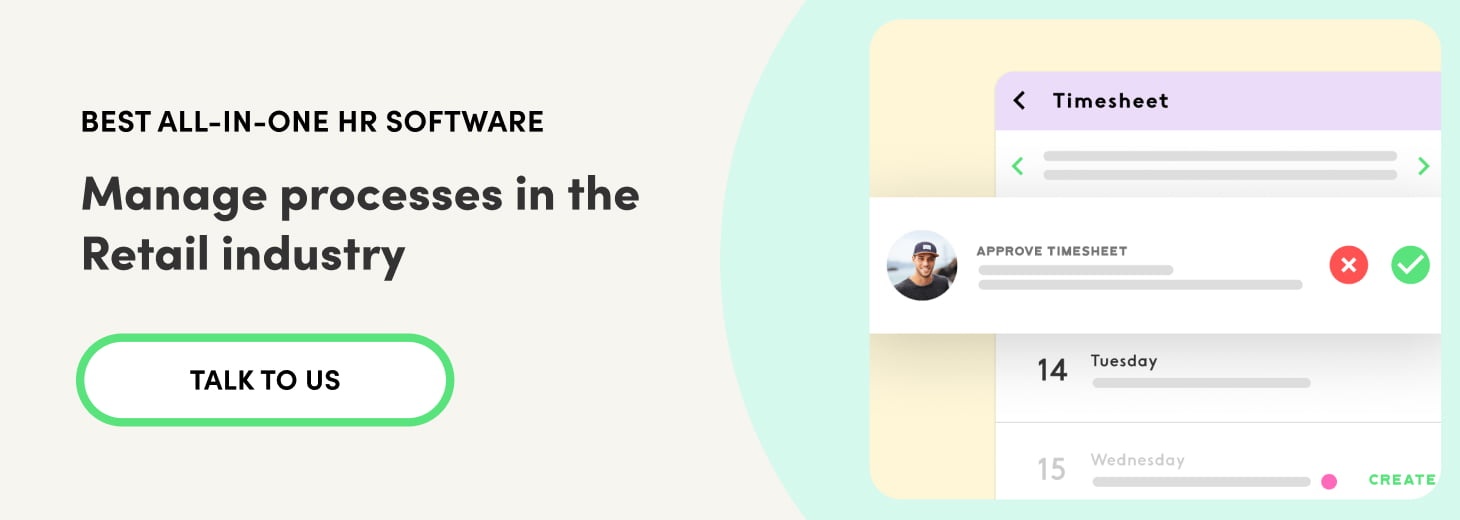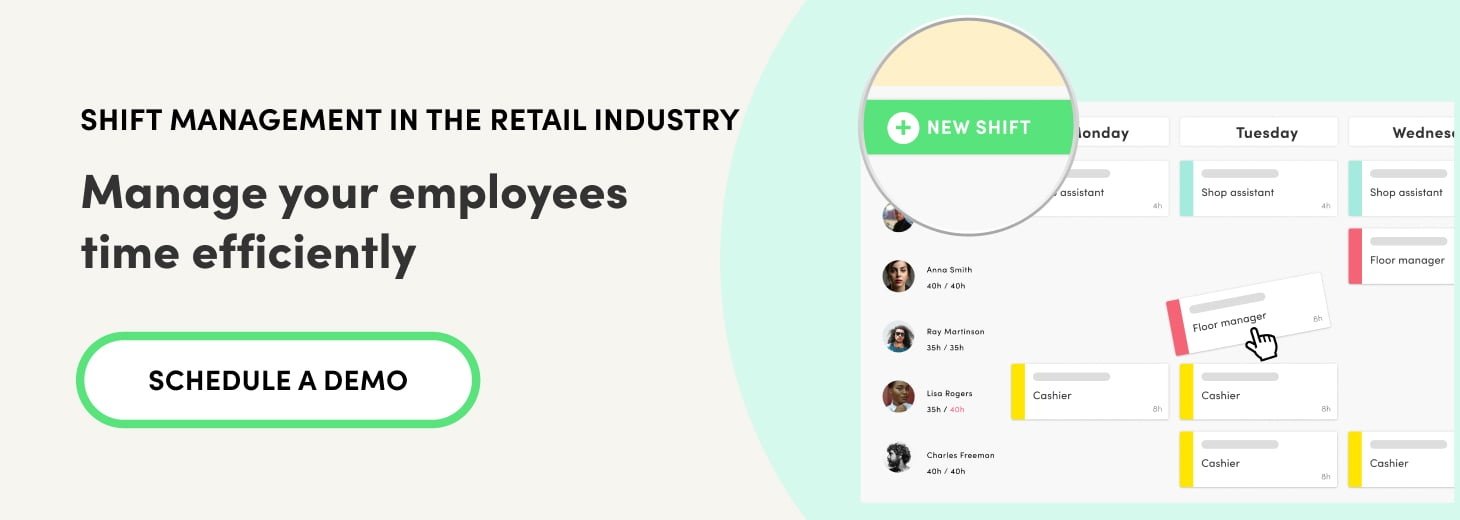Retail is a highly challenging sector in terms of HR. High staff turnover rates, the need for seasonal workers, employee training and multiple store locations are just some complexities faced by retail businesses.
Moreover, changing trends require the human resources department to be highly organised and to put extra effort into talent retention. In this article, we will look at some of these challenges in more detail.
1. Attracting talent
A high staff turnover rate means high costs for the company. Some studies estimate that replacing an employee can equate to between six and nine months of their salary. So, substituting a person who earns £30,000 per year, will cost around £15,000 to £22,500 in recruitment and training costs.
HR departments in the retail sector have to be able to attract people with talent and provide incentives so they decide to progress at the company. The salary is important, but so is creating a good company culture and building a solid employer brand to attract the new generations.
It is also essential to be able to attract and retain candidates who are customer focused and are happy, working hours that can be far from the norm.
Technology is key to achieving all this. It can aid in studying the life cycle of workers, identifying problems and implementing both short- and long-term solutions.

2. Shift management
In the retail sector it is common to use rotating shifts to provide customer service over longer hours and during weekends. Therefore, the HR department will be responsible for managing employee hours.
What’s more, during certain times of the year, such as Christmas, the company may need to expand the workforce to be able to cope with customer demand. In these cases, allocating shifts and seasonal recruitment requires additional efforts from the HR team.
Organising rotating shifts can be a complex task, as poor management can lead to dissatisfaction among staff, absences and resignations. Therefore, it is important to implement a system that can schedule shifts automatically and long enough in advance so that employees can get themselves organised.
3. Employee training
Having a training plan for employees is key to reinforcing their capabilities and improving their skills, both at work and outside the office. However, implementing a training plan in line with employee needs can be tricky, especially if there is a high staff turnover rate.
As such, the HR team must make a special effort to find the balance between training and hiring. Every time a new employee joins, the company needs to invest in their training. Once they are qualified, they will make a valuable member of the organisation. Therefore, there also needs to be a focus on retaining this type of employee and guaranteeing their engagement.
4. Process automation
The digital transformation is expanding little by little throughout companies, and the HR department is no exception. Talent management teams find themselves facing the challenge of digitising and automating their processes to increase efficiency.
The use of technology and custom HR software means mechanical and administrative tasks can be completed more quickly, in order to dedicate more time to strategic work and obtain key data for making better decisions.
5. Employee satisfaction
Employee engagement and wellbeing is something that applies to all companies and falls, for the most part, to the human resources department to manage. The benefits are substantial:
- Increased productivity and efficiency
- More satisfied customers.
- Lower levels of absenteeism and turnover rates.
- Increased revenue.
One way to measure employee satisfaction is to send out regular staff satisfaction surveys. This gives us an objective insight into how the staff are feeling and data on the company’s eNPS. With this information, the HR department can implement preventative measures and monitor the effects. It is important to demonstrate that employees have a voice and that their concerns are relevant to the organisation.
From there, the steps initiated to improve the culture and employee experience will increase staff engagement and wellbeing.

6. Employee skills assessment
Another challenge in this sector and in the field of HR is how to assess employees’ competencies. Companies are always on the lookout for objective methods for measuring the work delivered by the staff.
In the case of retail, one of the assessment methods that works best is the performance review, and within that, the 360-degree feedback method. This invites colleagues, subordinates, line managers, external customers and partners to give their opinions on each employee’s performance.
Collecting this data and drawing relevant conclusions is not easy. So, HR teams use performance review software that automates a large part of the process. Generally, this software takes care of sending out questionnaires, gathering feedback, and presenting the results obtained in automatically generated reports.
7. Centralised information
HR teams work with a vast quantity of documents and sensitive information. Maintaining these files organised and secure can prove to be a challenge. As such, using cloud-based HR programs that centralise all the information is usually the best option.
The HR team can then manage from there the payroll, reports, organigrams, and ultimately, all the documents they use on a daily basis. This is especially important in the retail industry, which has a multi-location structure, with different sales and/or manufacturing sites, as well as offices in various cities or even countries.
Likewise, with HR software employees can access all their key information and view in real time the holidays they have remaining, or request holidays, check their pay or submit receipts, among other things.
For all these functions, at Kenjo we offer a free trial of our software so that talent management leaders can check out the advantages of working with HR software.



